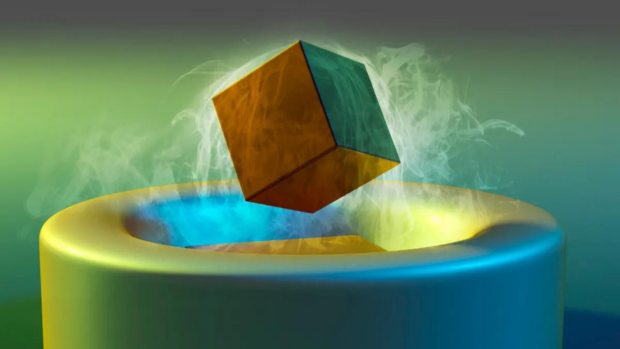South Korean scientists have recently published two studies on a groundbreaking superconductor that operates without the need for extreme cooling. They have provided video evidence showcasing the remarkable abilities of the LK-99 fragment, which can float on a magnet due to what is known as the Meissner effect. The researchers strongly believe that this development will usher in a new era for humankind.
While the world has been captivated by the progress of AI systems like ChatGPT, some of the most significant scientific advancements can seem mundane to the general population. However, if researchers are able to prove the reliability of LK-99 and replicate it, it has the potential to revolutionize everyday devices ranging from smartphones to trains. In this article, we will explore how superconductors function, their significance, and delve into the specifics of LK-99. We will also discuss the methods for creating LK-99 and the ongoing efforts of experts to validate this groundbreaking discovery.
Now, let’s delve into the concept of superconductors. Conductors, found in every electrical device, are materials that allow the flow of electricity. Copper wires, for instance, are commonly used conductors in devices such as lightbulbs. Most materials possess resistance, which obstructs the flow of current. This resistance is caused by the movement of atoms within the material, which consumes energy and reduces the amount of electricity reaching specific components. Over time, we have been able to develop materials with lower resistance, allowing for a greater flow of electricity to power complex machines. For example, advanced conductors enable your phone’s compact yet powerful processor to function.
On the other hand, superconductors are materials and devices that exhibit zero resistance. However, they require extremely low temperatures to function properly. By subjecting superconductors to subzero conditions, we can minimize the movement of atoms that leads to energy loss. This enables experts to effectively power supercomputers. However, these conditions are only feasible for industries with substantial financial backing, such as scientific research organizations and tech firms.
Now, let’s explore why LK-99 has scientists worldwide buzzing with excitement. The initial research papers were published by South Korean researchers in July, and within a week, their validity was proven by other scientists. Currently, both the US Lawrence Berkeley Laboratory and the Chinese Huazhong University of Science and Technology claim to have successfully replicated the South Korean discovery. The researchers at Huazhong University demonstrated their findings by sharing a video on Bilibili, China’s equivalent of YouTube. The video showcases the Meissner effect, as the LK-99 sample levitates in response to the magnetic field of a magnet.
If you’re intrigued and wondering if you can create LK-99 at home, you’ll be pleased to know that Tom’s Hardware has shared the synthesis method for this remarkable superconductor. It involves combining copper phosphide (Cu₃P) and lanarkite (Pb₂SO₅), followed by a 4-day, multi-step, solid-state synthesis process. Surprisingly, a Russian soil scientist named Iris Alexandra claims to have successfully recreated LK-99 on her kitchen counter. Furthermore, she is well-known online as an anime catgirl. The material’s potential has scientists excited, as it could significantly reduce the cost of manufacturing powerful gaming PCs. Modern gaming computers require extensive cooling systems and fans, which take up a lot of space and consume extra energy. With the integration of LK-99, computers could run more powerful processors without the need for expensive temperature regulation. Applying this breakthrough to smartphones could also lead to a significant increase in their processing power, potentially matching that of regular desktop computers. Additionally, LK-99 could open doors to advanced technologies like magnetic levitation or maglev trains. By incorporating LK-99 into rail systems, trains could hover above the tracks, resulting in faster and more reliable travel regardless of weather conditions or terrain.
In conclusion, South Korean researchers have made headlines with their alleged discovery of a superconductor called LK-99, which operates without the need for extreme cooling. If proven reliable and successfully replicated, LK-99 has the potential to transform our technological landscape by making devices more energy-efficient and powerful. However, despite the excitement surrounding this breakthrough, some experts, like Jens Koch, a physics professor at Northwestern University, remain skeptical. “Some of my colleagues have already expressed concerns about the data presented by the South Korean group,” he stated. Nonetheless, LK-99 could become a technological breakthrough on par with, if not surpassing, generative AI. Stay updated with the latest digital tips and trends at Inquirer Tech.
Denial of responsibility! VigourTimes is an automatic aggregator of Global media. In each content, the hyperlink to the primary source is specified. All trademarks belong to their rightful owners, and all materials to their authors. For any complaint, please reach us at – [email protected]. We will take necessary action within 24 hours.


